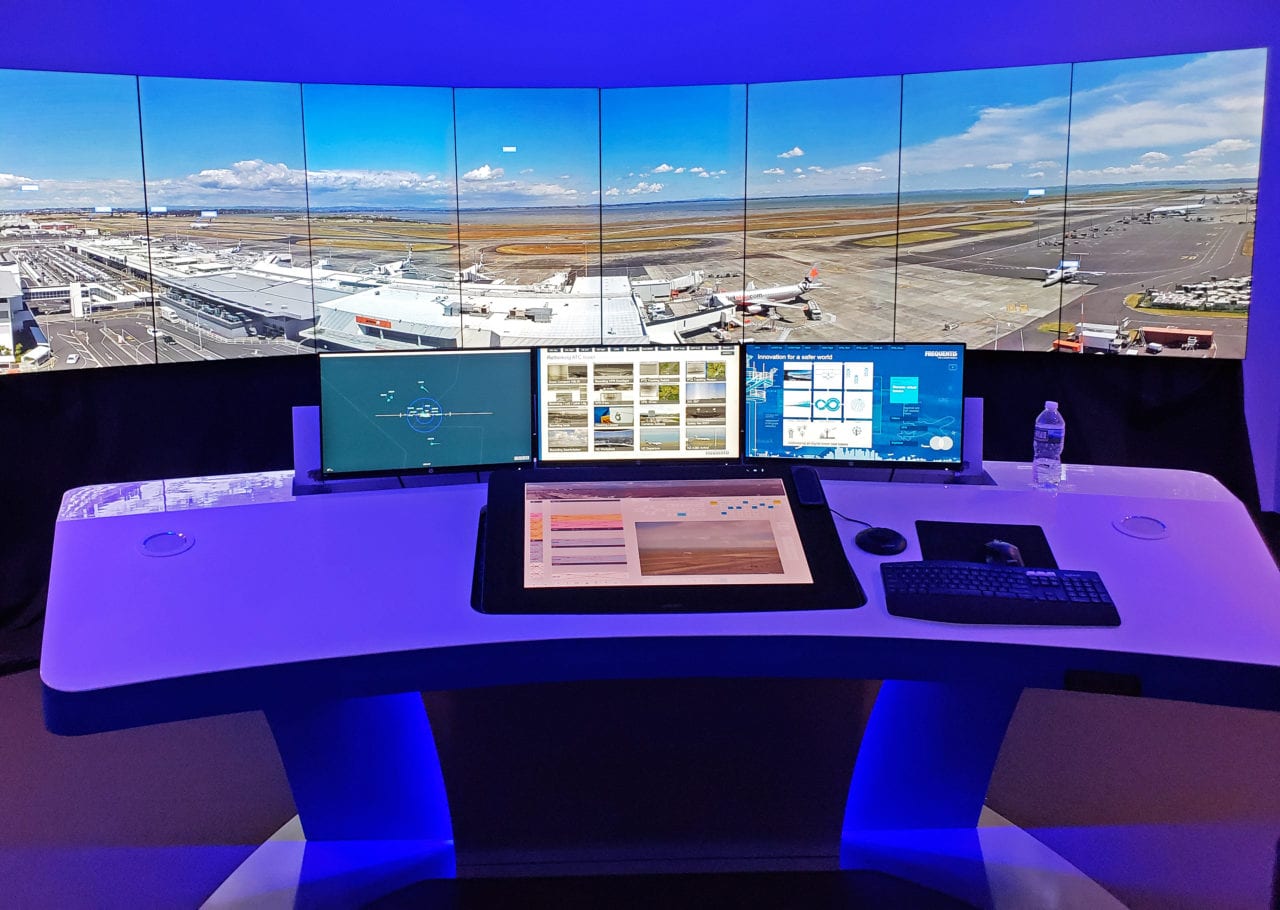
Frequentis’ remote virtual tower setup in the company’s new Innovation Center in Columbia, Maryland. (Nick Zazulia)
Raytheon is teaming with Frequentis to bring the latter’s remote virtual tower technology to the U.S. as part of airspace modernization efforts.
Raytheon is a major contractor in the FAA’s NextGen modernization program, implementing its standard terminal automation replacement system (STARS) technology throughout the country. That phase of the National Airspace System (NAS) modernization is set to be completed at its final locations this year — important because it readies facilities for the coming January 1, 2020 ADS-B mandate — and Raytheon is looking at more upgrades.
Frequentis has developed what it called a remote virtual tower: technology that allows air traffic controllers to serve all the functions of a control tower from anywhere in the world through the extensive use of cameras and real-time video. A wall of displays replaces the tower’s familiar windows overlooking the airfield and shows controllers what is happening, with the added bonus of automated overlays to provide more information and highlight items of interest.
Not only does this allow controllers to work from wherever makes the most sense without requiring a brick-and-mortar tower, but it facilitates increased efficiency; the same “tower” can monitor multiple far-away airports at the same time if their workload allows for it.
“These tower systems could significantly increase the safety and efficiency of airport operations in locations that either don’t have towers today or have towers that need expensive renovations,” said Matt Gilligan, Raytheon vice president of intelligence, information, and services.
Congress’ 2018 omnibus appropriations bill included $2.5 million in provisions for the FAA to explore virtual tower technology. The U.S. is behind Frequentis’ native Germany, where remote airport operations are already underway.
“Remote virtual towers are more than an emerging trend,” said Leonard Swiontek, president of Maryland-based Frequentis USA. “They will help optimize facilities and resources, which means safer, better and more affordable air traffic services across the U.S.”
The agreement between Raytheon and Frequentis, which the two companies announced Tuesday at World ATM Congress in Madrid, will see the companies explore opportunities over the next 12-24 months as the technology is qualified in America, according to Christopher Rogers, Raytheon’s program manager for STARS and remote virtual towers. Then, they will pursue opportunities with federal contract towers, which are particularly common in the South.
“There’s a couple hundred of those physical towers today that have controllers working them,” Rogers said. “We feel that’s the initial opportunity space for municipal airports that have aging towers that need to be replaced but can’t afford or don’t want to pay for a physical air traffic control tower.”
Virtual towers are a cheaper alternative, which might be attractive to cash-strapped municipal airports.
“A lot of the federal contract towers, more than 100 of them are beyond their economical use for life so they have a lot of serious issue with them and they are expensive to maintain,” he said.
According to Rogers, switching from a physical tower to a virtual tower is simpler than putting a virtual tower where there previously was no tower because in the former case, the systems are already in place to facilitate tower control. However, being more difficult doesn’t mean it’s not an option.
“It could potentially enable additional airports to have tower services,” Rogers said.